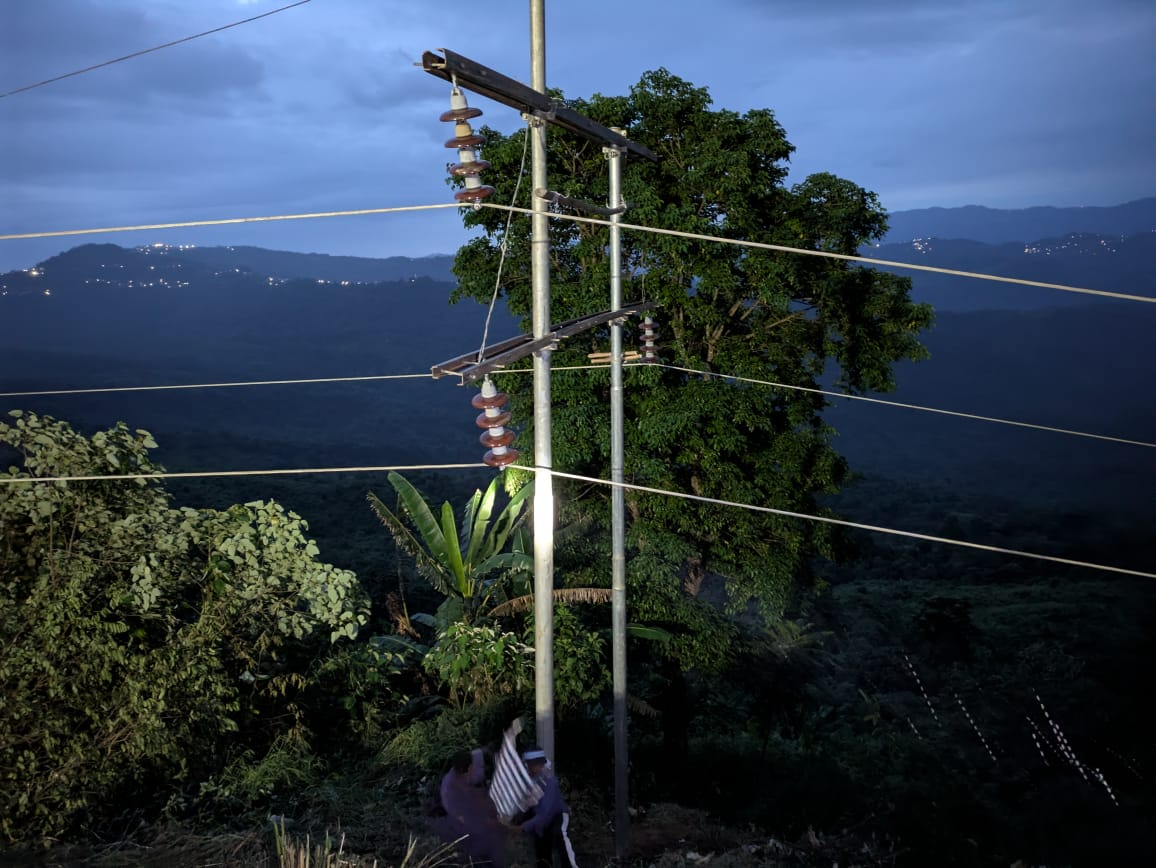Power supply to Tuli Sub-Division, Longleng and Mon districts is set to return soon after a 66 kV transmission tower in the Yisemyong area collapsed on August 8 due to massive landslides.
The Department of Power this evening at 6:36 PM confirmed to Nagaland Tribune that an emergency double-pole structure has been erected and the line has been successfully test charged up to Tuli. According to Er. Akum, SDO, Transmission Division Mokokchung, line loading and charging will be done gradually up to Mon. Line is charged till Mon at 19:07 hrs, he disclosed.
Er. Akum explained that the restoration teams have been battling rough, landslide-prone terrain and thick vegetation, which slowed down clearance work, making each step toward reconnecting power a physically demanding and time-consuming task. He added that about 30 workers from the Transmission Division, CTN Division, and Yisemyong Sub-Division have been on the ground for the past two days, working tirelessly to restore the line despite the tough conditions.
In Tuli, Tasen, a resident, shared how the three-day power outage has disrupted daily life.
“Our inverters are running out of batteries, but thankfully the weather is quite fine,” he said. “Life without electricity is hard. We’re charging batteries through our cars, and shops are fully dependent on electricity. People are even carrying their inverter batteries to sawmills to charge them using generators. The struggle has been real for three days now — we’re 90 to 95 percent dependent on electricity, and without it, we can’t do anything. It’s very hot, and people are roaming the roadsides because there’s no light. Tuli is one of the business hubs, so life without electricity is very hard for everyone here.”
In Mon town, Longang explained that they have been without electricity since the collapse of the transmission tower.
Download Nagaland Tribune app on Google Play

“We still have inverter backup, so at home we haven’t faced too many problems except that we can’t use the fan. But if the power cut continues for more days, we’ll have to buy candles to get through the nights,” he said.
Longang recounted how the outage has affected daily services and businesses:
“Yesterday, I went to the post office to send a parcel to Kohima, but they couldn’t process it because the computers were off. We are relying on fire for cooking and inverters for lighting. Ice cream shops, bakeries, computer centers, courier services, welding shops, construction workers — many businesses are suffering. Poultry farms are also affected.”
He noted that people in Tizit, Naginimora, and Aboi will be suffering more due to the hotter climate in these areas. “Whenever there’s a long power cut, the church generator is switched on once in a while, and people from the colony gather there to charge their phones and other devices,” he added.
According to him, power cuts have become a common experience for Mon residents.
“There have been many outages recently, sometimes to clear forest areas for the electric department or for reasons like this tower collapse. People have somehow learned not to make a big fuss about it, even though it affects us badly,” he observed. “The biggest challenge is communication — passing information for meetings or emergencies becomes very difficult.”

